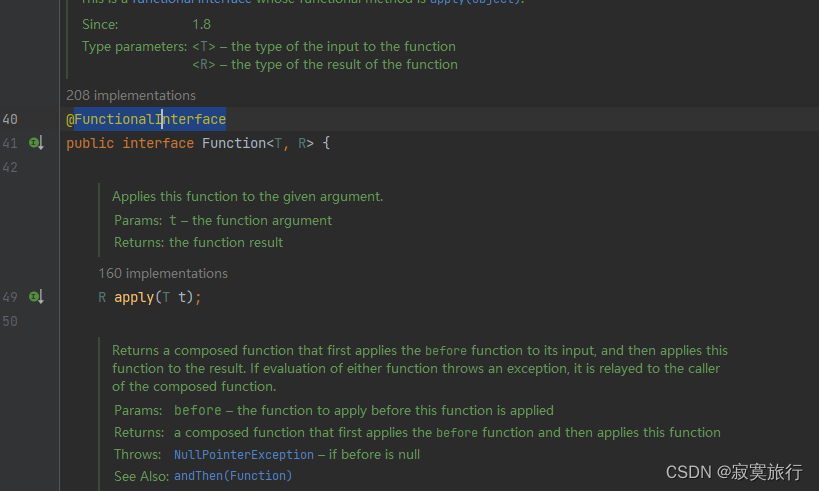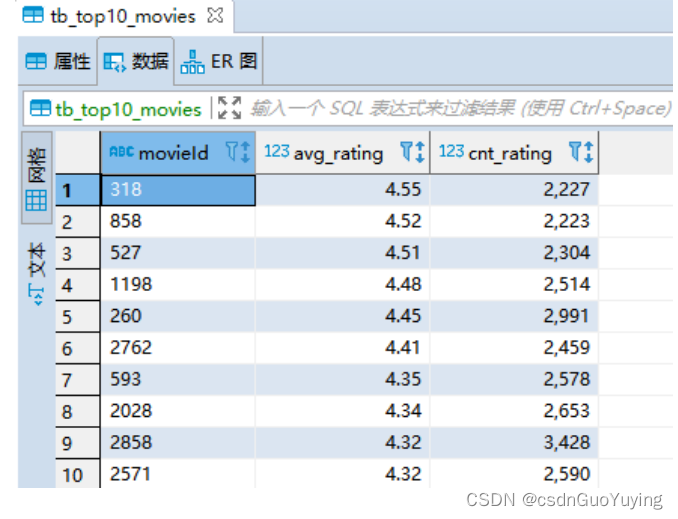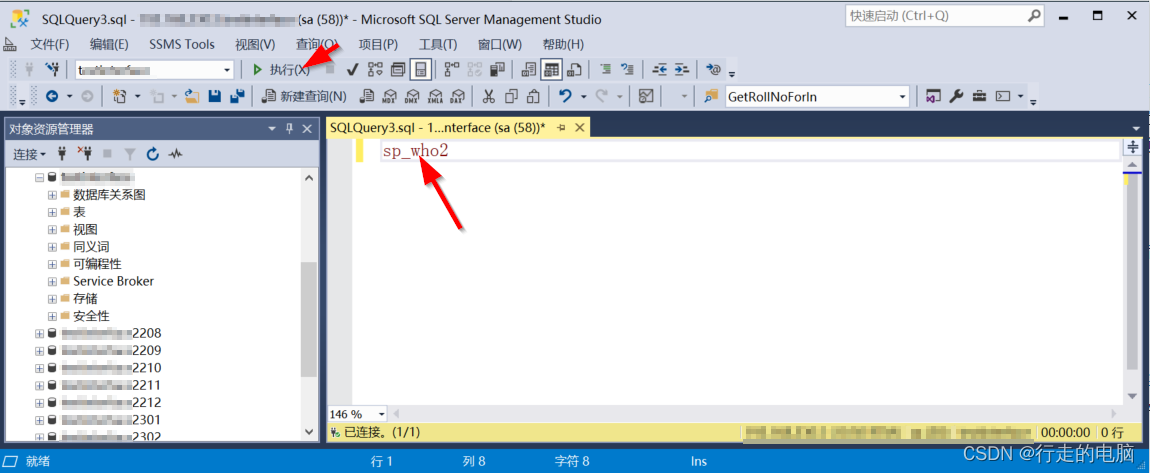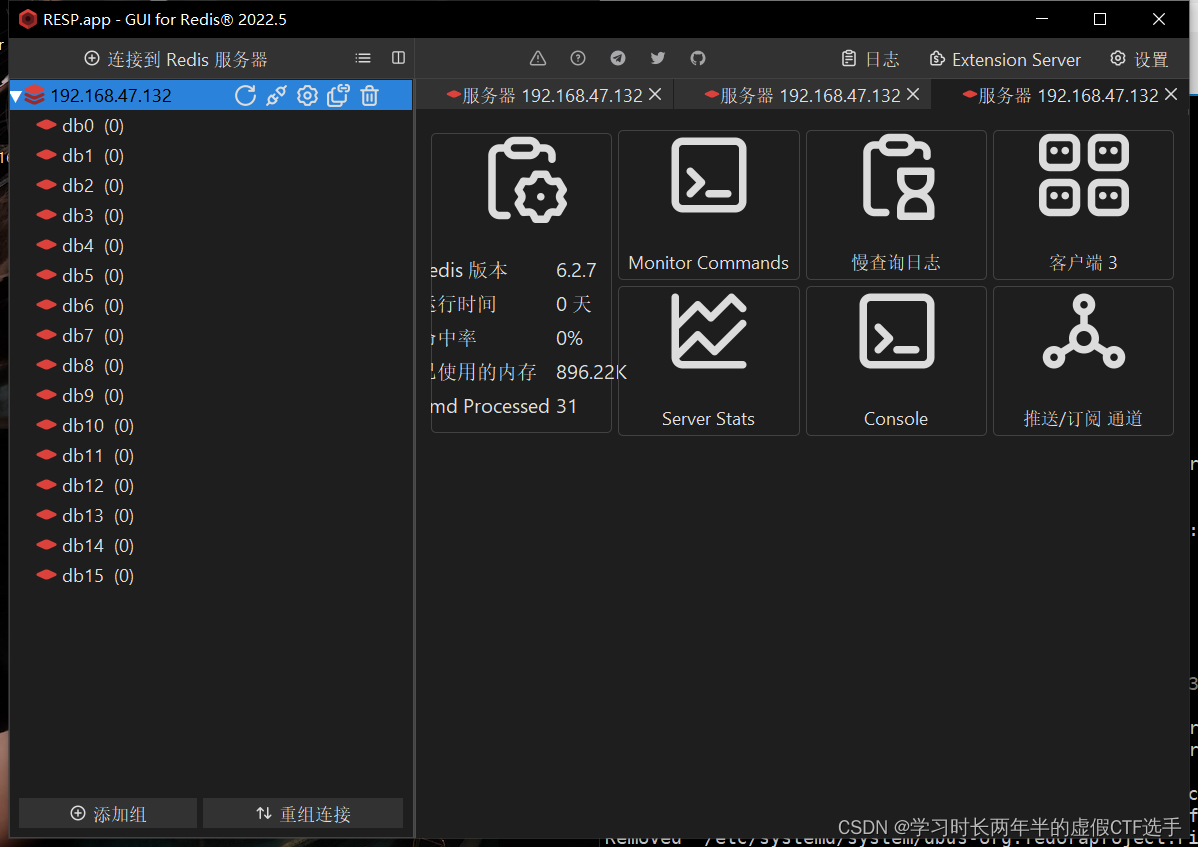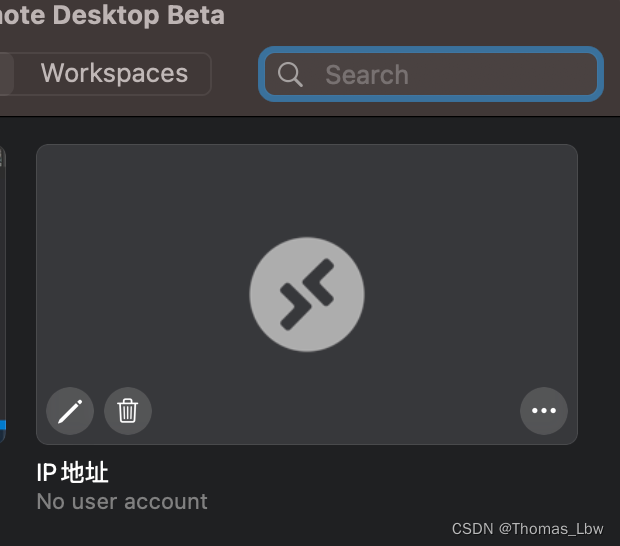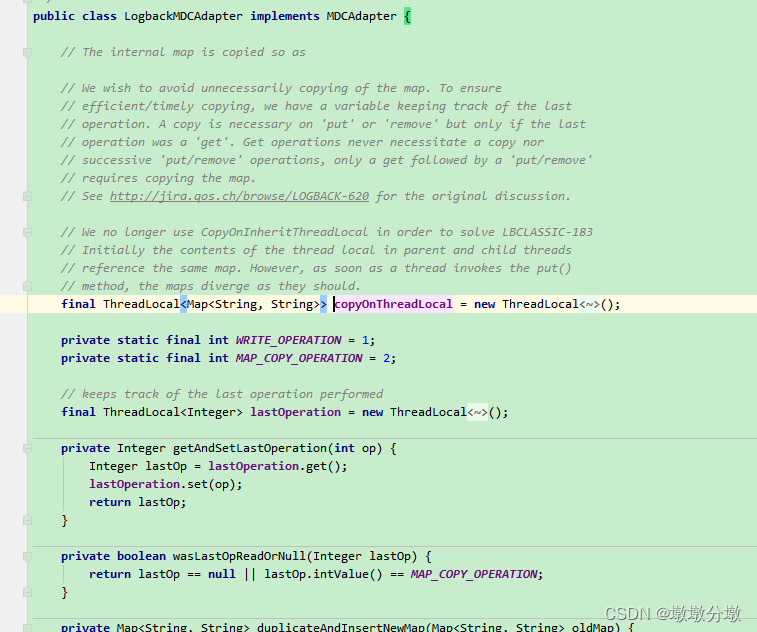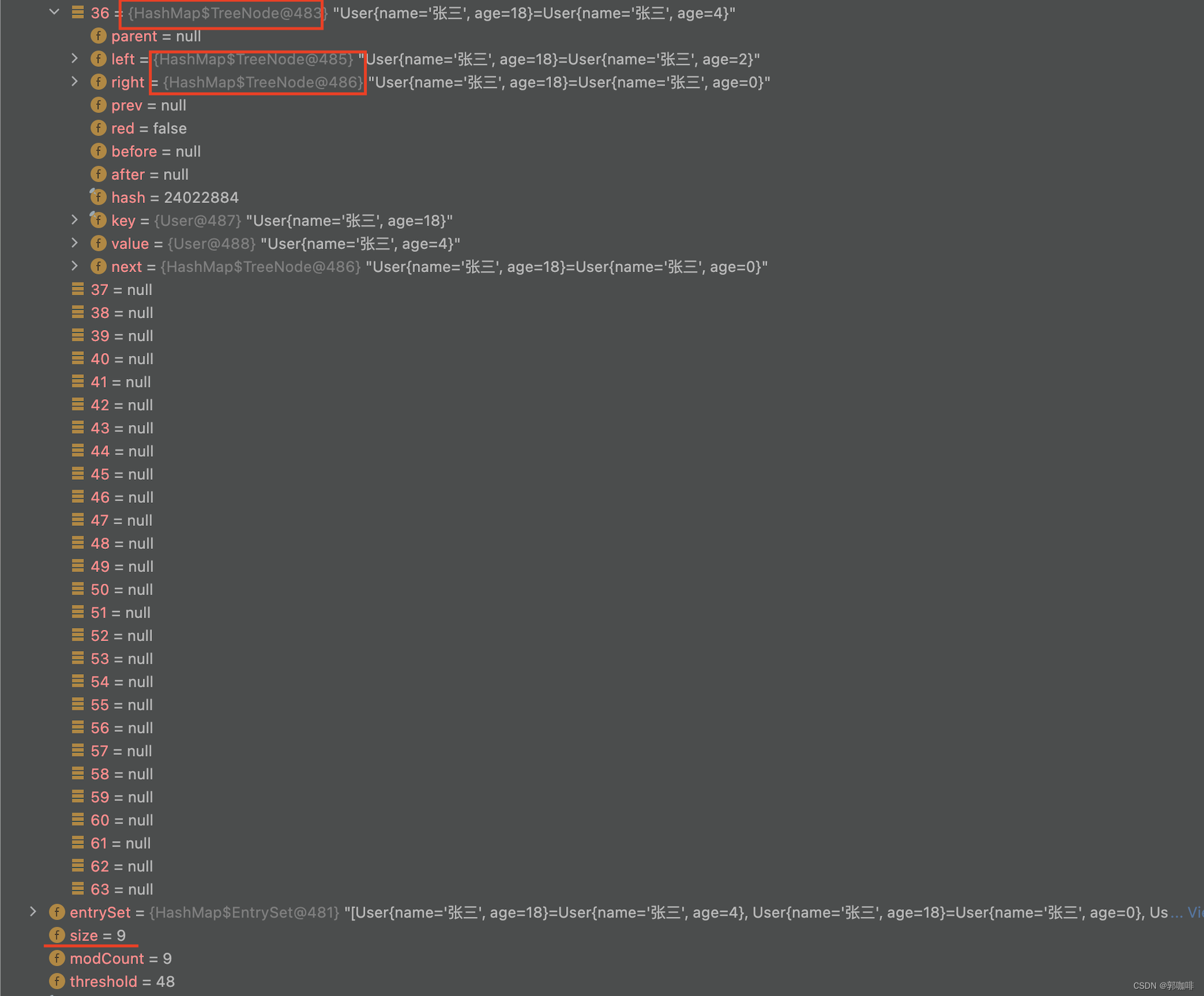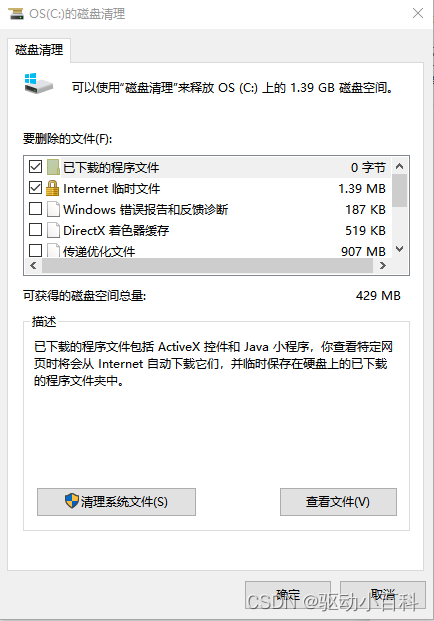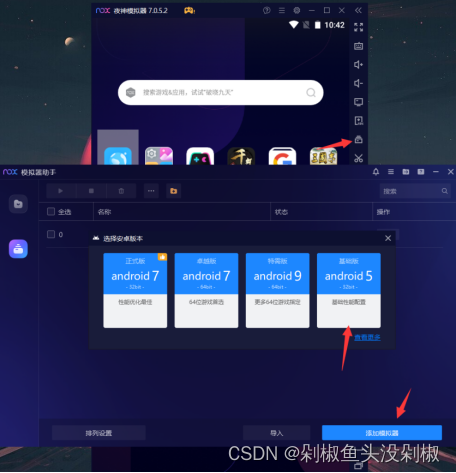文章目录
- 缓存使用
- 缓存源码
- 测试代码
上一篇《【Mybatis源码解析】mapper实例化及执行流程源码分析》,主要讲解了Mybatis的基本原理一级执行的流程,这一章来讲一下Mybatis的两个缓存:一级缓存和二级缓存。
因为网上大部分都是使用xml配置的方式来使用缓存,所以我们这里讲解一下注解的方式。
一级缓存
一级缓存是SqlSession级别。一级缓存的作用域是 SqlSession , Mabits 默认开启一级缓存。 在同一个SqlSession中,执行相同的SQL查询时;第一次会去查询数据库,并写在缓存中,第二次会直接从缓存中取。 当执行SQL时候两次查询中间发生了增删改的操作,则SqlSession的缓存会被清空。
一级缓存 Mybatis的内部使用一个HashMap,key为hashcode+statementId+sql语句。Value为查询出来的结果集映射成的java对象。 Sqlsession执行insert、update、delete等操作commit后会清空该SqlSession缓存。
-
MyBatis一级缓存的生命周期和SqlSession一致。每次执行update前都会清空localCache。
-
MyBatis一级缓存内部设计简单,只是一个没有容量限定的HashMap,在缓存的功能性上有所欠缺。
-
MyBatis的一级缓存最大范围是SqlSession内部,有多个SqlSession或者分布式的环境下,数据库写操作会引起脏数据,建议设定缓存级别为Statement,即关闭一级缓存。
二级缓存
二级缓存是Mapper级别的缓存,多个SqlSession去操作同一个Mapper中的sql语句,则这些SqlSession可以共享二级缓存,即二级缓存是跨SqlSession的。简单说就是同一个namespace 下的 mapper 映射文件中,用相同的sql去查询数据,会去对应的二级缓存内取结果。
MyBatis的二级缓存相对于一级缓存来说,实现了SqlSession之间缓存数据的共享,同时粒度更加的细,能够到namespace级别,通过Cache接口实现类不同的组合,对Cache的可控性也更强。
MyBatis在多表查询时,极大可能会出现脏数据,有设计上的缺陷,安全使用二级缓存的条件比较苛刻。
在分布式环境下,由于默认的MyBatis Cache实现都是基于本地的,分布式环境下必然会出现读取到脏数据,需要使用集中式缓存将MyBatis的Cache接口实现,有一定的开发成本,直接使用Redis、Memcached等分布式缓存可能成本更低,安全性也更高。
总结: 生产上建议关闭一级和二级缓存。
缓存使用
yml配置:
mybatis:
configuration:
# 驼峰大小写经典 Java 属性名 aColumn 的自动映射,默认值为false
map-underscore-to-camel-case: true
# statement: 关闭一级缓存;session:开启一级缓存 默认为session
local-cache-scope: session
# 开启二级缓存 默认为true
cache-enabled: true
# 打印sql
log-impl: org.apache.ibatis.logging.stdout.StdOutImpl
mapper接口(注解版):
@CacheNamespace注解:
作用于mapper接口上面,是用来实现二级缓存的,如果不指定实现类的话,默认就是PerpetualCache(实际上就是hashmap实现的)
@CacheNamespaceRef注解:
在多个命名空间中共享相同的缓存配置和实例
@Options(useCache = true,flushCache = Options.FlushCachePolicy.DEFAULT)注解:
useCache :是否用缓存,默认为true。
flushCache :是否刷新缓存,默认不刷新。
mapper接口(xml版):略。
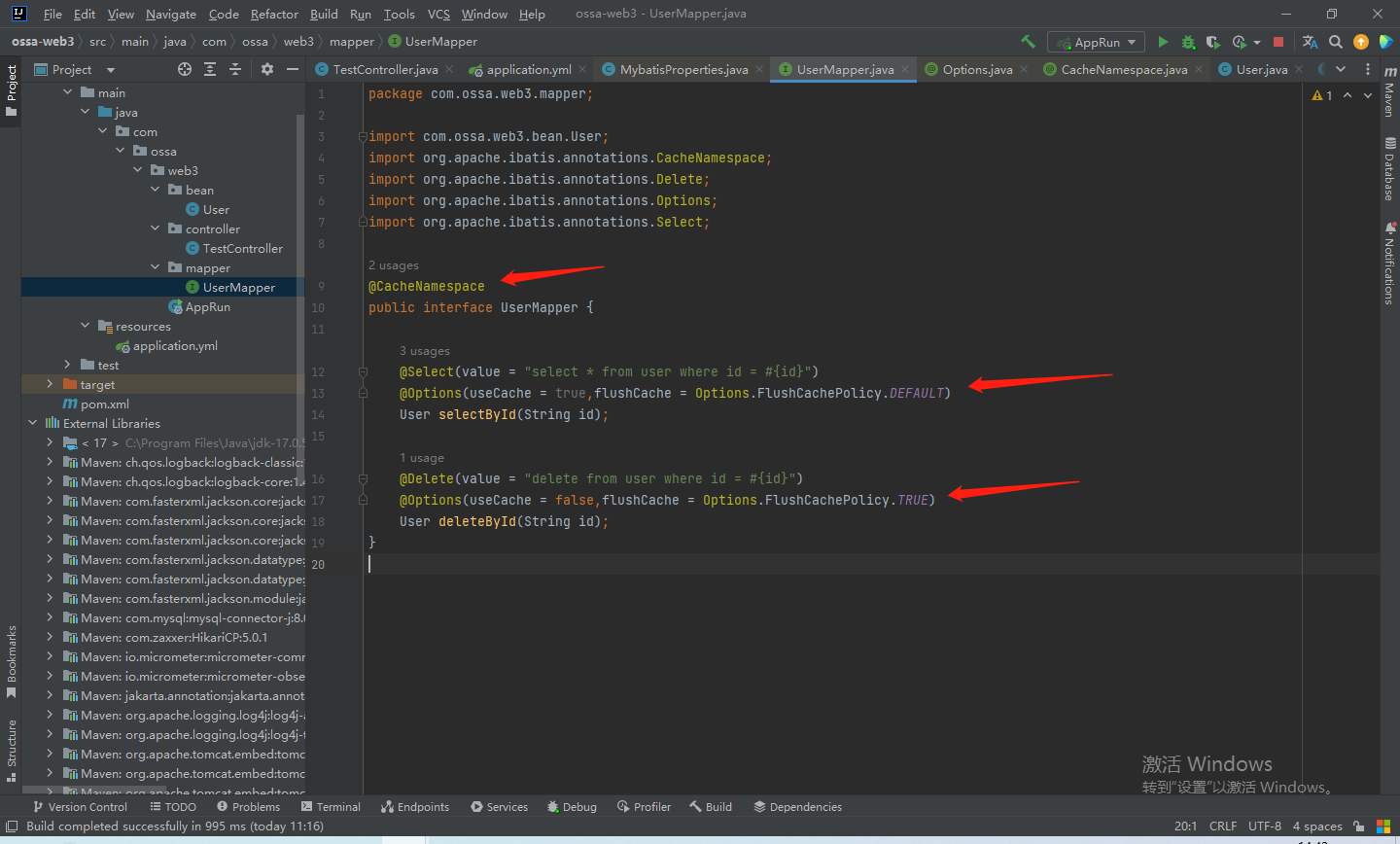
缓存源码
新版的源码并没有太多改变,发送请求时,先从二级缓存中取,未取到则去一级缓存中取,仍未取到会去数据库中查,再存到一级缓存中,当事务提交之后,会存到二级缓存中,值得注意的是,mybatis中的一些cashe相关类挺有意思的,用来解决不同场景的问题,比如脏读。因为源码比较简单易懂,确实没什么值得可以写的,我想大家cv一下我的demo,debug一下应该就明白了。

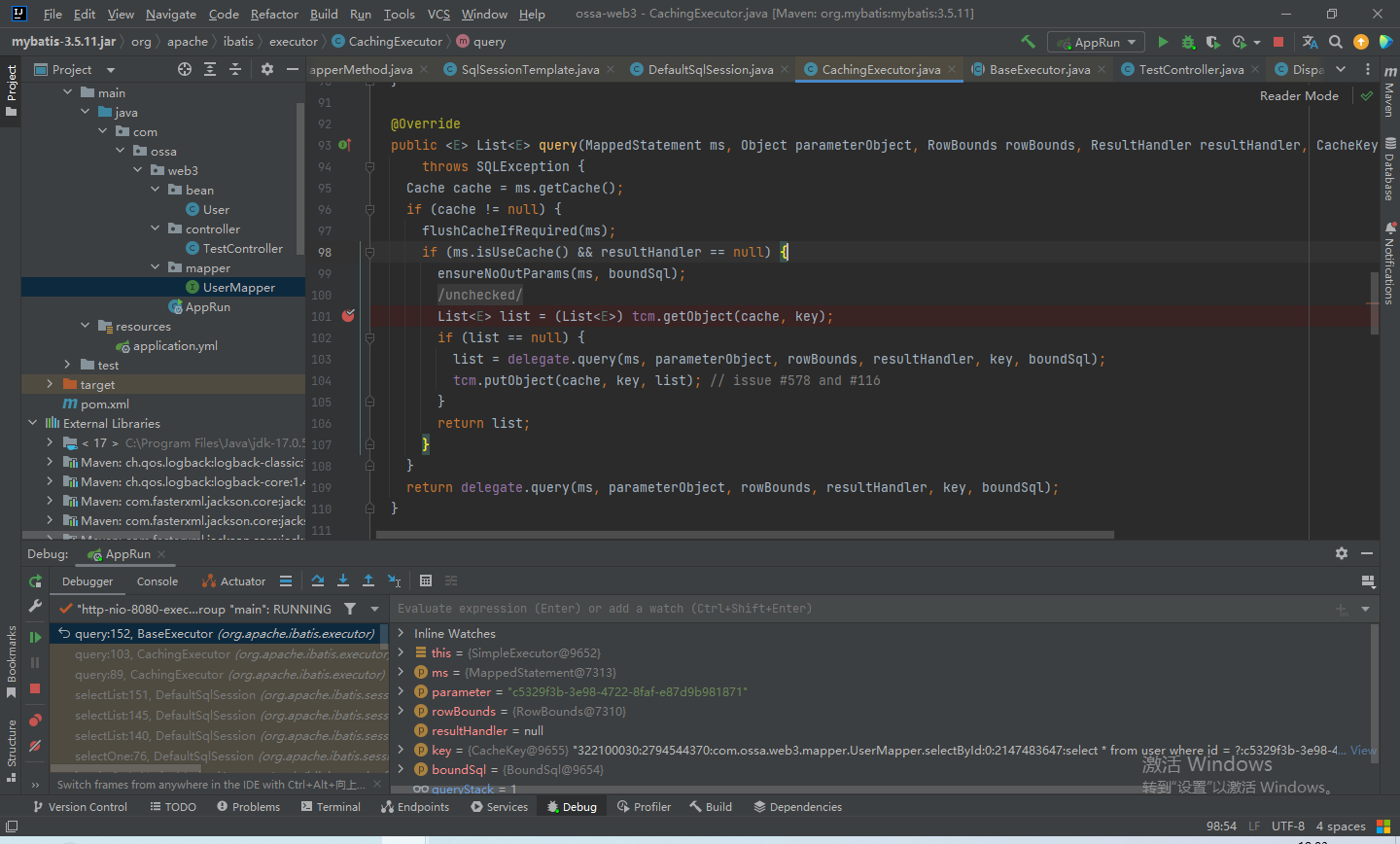
- Mybatis在生产环境,是否应该开启缓存功能
- mybatis 开启二级缓存
- Mybatis开启本地二级缓存和使用redis开启二级缓存
- Mybatis 之 二级缓存
- 你尝试过在mybatis某个mapper上同时配置<cache/>和<cache-ref/>吗?
- Mybatis缓存源码分析
测试代码
controller
package com.ossa.web3.controller;
import com.ossa.web3.bean.User;
import com.ossa.web3.mapper.UserMapper;
import org.springframework.beans.factory.annotation.Autowired;
import org.springframework.cache.annotation.Cacheable;
import org.springframework.transaction.annotation.Transactional;
import org.springframework.web.bind.annotation.DeleteMapping;
import org.springframework.web.bind.annotation.GetMapping;
import org.springframework.web.bind.annotation.RequestMapping;
import org.springframework.web.bind.annotation.RestController;
@RestController
@RequestMapping("/user")
public class TestController {
@Autowired
private UserMapper userMapper;
@GetMapping("/l1cache")
@Transactional
public User l1cache() {
User user1 = userMapper.selectById("c5329f3b-3e98-4722-8faf-e87d9b981871");
User user2 = userMapper.selectById("c5329f3b-3e98-4722-8faf-e87d9b981871");
return null;
}
@GetMapping("/l2cache")
public User l2cache() {
return userMapper.selectById("c5329f3b-3e98-4722-8faf-e87d9b981871");
}
@DeleteMapping("/deleteById")
public User deleteById() {
return userMapper.deleteById("c5329f3b-3e98-4722-8faf-e87d9b981871");
}
}
实体类
package com.ossa.web3.bean;
import lombok.Data;
import java.io.Serializable;
@Data
public class User implements Serializable {
private String id;
private String name;
private Integer age;
}
mapper接口
package com.ossa.web3.mapper;
import com.ossa.web3.bean.User;
import org.apache.ibatis.annotations.*;
@CacheNamespace
public interface UserMapper {
@Select(value = "select * from user where id = #{id}")
@Options(useCache = true,flushCache = Options.FlushCachePolicy.DEFAULT)
User selectById(String id);
@Delete(value = "delete from user where id = #{id}")
@Options(useCache = false,flushCache = Options.FlushCachePolicy.TRUE)
User deleteById(String id);
}
application.yml
spring:
datasource:
driver-class-name: com.mysql.jdbc.Driver
url: jdbc:mysql://issavior-aliyun-rds.mysql.rds.aliyuncs.com:3306/test?useUnicode=true&charsetEncoding=utf-8&useSSL=false&serverTimezone=Asia/Shanghai&allowMultiQueries=true
username: root
password: root
mybatis:
configuration:
# 驼峰大小写经典 Java 属性名 aColumn 的自动映射,默认值为false
map-underscore-to-camel-case: true
# statement: 关闭一级缓存;session:开启一级缓存
local-cache-scope: session
# 开启二级缓存
cache-enabled: true
# 打印sql
log-impl: org.apache.ibatis.logging.stdout.StdOutImpl
############### Sa-Token 配置 (文档: https://sa-token.cc) ##############
#sa-token:
# # token名称 (同时也是cookie名称)
# token-name: satoken
# # token有效期,单位s 默认30天, -1代表永不过期
# timeout: 2592000
# # token临时有效期 (指定时间内无操作就视为token过期) 单位: 秒
# activity-timeout: -1
# # 是否允许同一账号并发登录 (为true时允许一起登录, 为false时新登录挤掉旧登录)
# is-concurrent: true
# # 在多人登录同一账号时,是否共用一个token (为true时所有登录共用一个token, 为false时每次登录新建一个token)
# is-share: true
# # token风格
# token-style: uuid
# # 是否输出操作日志
# is-log: false
